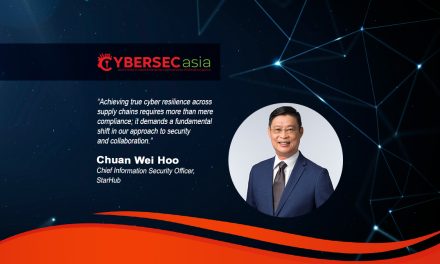Yes, says this expert: AI and ML can be used to automate and toughen multi-cloud platforms and Operational Technology.
Digital transformation means more than digitizing solutions and process. It is about creating a connected, seamless environment with security at the core of its design.
AI, deep learning, automation and robotics technologies, all leverage data as the most important asset. This could be data from various sources such as various legacy and cloud locations, Internet of Things sensors or AI algorithms creating their own data. IDC predicts that data in the Asia Pacific region will increase from 5.9 zettabytes in 2018 to 33.8 zettabytes in 2025, representing 19.3% of all global data. Visibility, seamless flow and security of this data will be a key priority for enterprises in 2020.
Unfortunately, realizing the power of data has also created awareness around its vulnerabilities. Threat vectors are evolving every day with changes in the technology landscape, and the business of cybersecurity is becoming increasingly complicated. As organizations leap forward in their digital transformation journey in 2020, three key measures around the convergence of IT and OT, multi-cloud services, and automated cyber defenses will be crucial for them to establish cyber resilience.
The convergence of IT and OT security
The Operational Technology (OT) security products and services market which addresses legacy industrial systems is transitioning to more connected platforms and systems with the convergence of IT and OT, enabled by Industrial Internet of Things (IIoT). While this trend is bringing greater efficiencies and automation, it is also introducing new risks and challenges. Connected OT devices expose potential vulnerabilities within business digital ecosystems, threatening the security of data and impacting business-critical operations.
Identifying potential threats to prevent attacks is going to be the next priority. Powered by huge amounts of accumulated data, machine learning (ML) and artificial intelligence (AL) tools are set to strengthen threat intelligence capabilities. For example, at Orange Cyberdefense, we analyse more than 30 billion security events and 20,000 individual items of malware each day. Studying the behavior patterns of these threats helps us predict and protect against emerging attacks.
Multi-cloud security becomes a priority
In constantly-evolving regulatory environments, multi-cloud services and requirements continue to grow (often mandated) and securing this cloud sprawl becomes a new challenge.
Many enterprises are not aware of the complexities that multi-cloud brings, ultimately entailing a heightened lack of control and visibility over their dispersed cloud estate and resources. They only become aware of the complexity of their cloud environment when an incident occurs.
According to IDC, by 2020 90% of enterprises will be using a combination of cloud services and platforms. There is no doubt that multi-cloud solutions enhance efficiency and bring scalability and agility. However, enterprises must be cautious of potential vulnerabilities that can emerge from this multi-platform approach. They need to undertake audits to evaluate third-party risks to ensure they are compliant on all fronts, including regulatory and contractual agreements. These agreements become even more important to ensure accountability of the network security.
Automated cyber defenses with AI and ML
Moving beyond baby steps toward AI and ML, the human-machine partnership is taking definite form and shape. This partnership will be critical because in time, cybersecurity may become fully automated. ML is invaluable in supporting human expertise by replacing routine tasks, and AI has the ability to provide advanced detection qualification and analysis alongside remediation. The challenge with automated remediation is to ensure that the system is smart enough to make decisions that will curb attacks and not amplify them.
For automated cyber defenses to succeed, enterprises need to bring about some behavioral changes. Once the algorithms have been exposed to enough data and the system develops sound cognitive skills, businesses must be ready to embrace this opportunity. The biggest question for enterprises in the automated cybersecurity approach is, whether they are comfortable in delegating the decision-making power to machines for issues pertaining to security.
We urge organizations to capitalize on these emerging technologies as a key focus in securing their digital ecosystem. It is important to place security at the core of the design and planning, and to adapt sooner rather than later. The technological advancements will never halt; trust between service providers and customers is essential for secure adoption and implementation of emerging technologies and for succeeding in the era of the fourth industrial revolution.

















